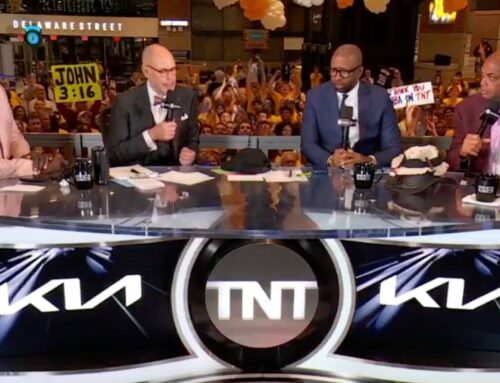The Ray-Ban Meta Glasses: A Photographer’s Perspective
June 1, 2025
I’ve had the Ray-Ban Meta smart glasses for a while now, and this is what I think of them as a professional photographer, as well as why I picked them up and whether I would do so again. Smart glasses have come a long way from their initial inception many years ago. While there is still a lot of ground to cover—where I’m sure they will become a more portable version of the Apple Vision Pro—for now, this is what we have. But is it worth it?
Let’s start with the basics—why did I pick these up in the first place? Contextually, I’m a professional photographer, I create content, and I’m a bit of a tech nerd. The last part I try not to let get the better of me, as the newest tech can always be enticing, but I seldom actually take those leaps. This was one exception where I actually did.
That said, I got these more for the content creation/social media aspect of things as opposed to integrating them into being a photographer. That said, my favorite thing to use them for is a POV angle while I’m shooting, without the need for a GoPro, chest phone mount, or anything of the sort. I do find that if you make behind-the-scenes content, this is a great way to add a unique angle. It also always gets a great response from people.
I’ve also found I don’t just use these professionally—I actually enjoy them when I’m out and about and not needing to bring sunglasses plus a pair of headphones. The sound quality is great, and I’ve taken multiple phone calls with these. Everyone has always said the call quality is fantastic, even if there is a lot of wind. Even for music, I find the quality is pretty solid. A concern I’ve often heard is whether other people can hear your music as it’s playing, but I often find that not to be the case. Unless you are in a quiet room with someone close to you, they can’t really hear anything. They do allow for a good amount of ambient noise, as they don’t actually block your ears at all. Personally, I like being able to hear what’s going on around me, but if you’re looking for more of a noise-canceled experience, that is something to keep in mind.
When getting used to them, I do find that there is an adjustment period to get used to the weight on your head, as they are a little heavier than your typical sunglasses. If you wear them for a while, you may get a mild headache. That said, I did find I adjusted in time, and that doesn’t really bother me so much anymore.
Then the part I’m sure you want to know: the camera quality. How is it, and is it usable? When smart glasses first started coming into existence, the camera quality wasn’t really anything to write home about, or at least left something to be desired. Now, with these, I feel like it is about one step below modern phone camera quality. Compared to modern phones and the cameras in them, you actually get a decent image that is usable in most cases. I’ve even had people mention how solid the quality out of these is. Now, the image will definitely not come close to a proper DSLR or mirrorless camera—but then again, it’s not meant to. I do find with these, I end up getting more videos throughout my life, travels, etc., while pulling my phone out less.
For myself, I opted for the regular sunglasses variety, whereas there are also prescription and transition lenses. I would argue the transitions are probably the most versatile if you’re not a regular glasses wearer, as anytime I’m inside or if it’s at night, I find I’m much less likely to pull them out. Were I to get these again, I would likely go with the transition lenses, as it makes getting content inside or at night considerably easier. So if you’re considering picking these up, that is definitely something to keep in mind.
For battery life, I find it to be pretty solid, and the charging case does help. I can wear them all day without worrying about the battery dying. I find on average I end up charging the case about once a week or so, depending on how much I wear them. I would put the battery life just below that of most wireless headphones with a charging case, which is pretty good—especially if you’re recording a lot of video with the camera or listening to music for long periods of time. Now, if you’re just a photographer and don’t care for content creation, these may or may not be of interest. That said, if you like not carrying around headphones in addition to sunglasses, then that is something you may find useful—and a convenience that I have enjoyed.
The build quality so far has held up for me rather well, and I’m not historically someone who is exactly easy on sunglasses. I do have a friend who has them as well and has mentioned the call quality has started to suffer. As I use these continuously, I will be watching for that, but in my experience so far, it seems to be holding up. As a complete side note, I’m also glad they have the large sizing option in addition to the regular size, as I am a guy with a rather large noggin, so that option was a definite benefit. Otherwise, they would likely be too tight on my head. They are heavier than your usual sunglasses due to the tech, and for the first week of wearing them for longer times, I found I would get the odd tension headache. Over time, I have found I adjusted to them, and the headaches don’t really happen now.
So ultimately, the question becomes: do I find these to be worth it, and would I make the investment again? For me, the answer is yes. I quite enjoy them, and they’ve quickly become my daily wear as far as sunglasses are concerned. The price tag, I find, is not far off from most designer or high-end sunglasses, which helps make them worth it. And it’s worth mentioning that I am in no way affiliated with Ray-Ban or Meta—I’ve just been using these for a while and wanted to give an honest perspective on the pros, cons, and some things I learned only after owning them. You can purchase the glasses here.
Search
RECENT PRESS RELEASES
Related Post





